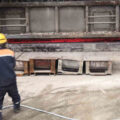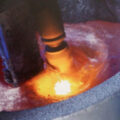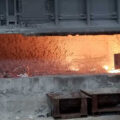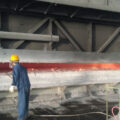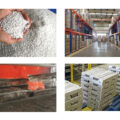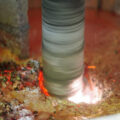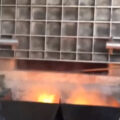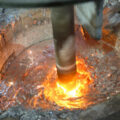The effects of pure nitrogen refining and pure nitrogen-melting furnace flux mixed blowing refining have been compared. The refining time is the same as 12 minutes, and the hydrogen content of the aluminum melt before refining is 0.41mL/100g. The hydrogen content after refining with pure nitrogen is 0.29mL/100g, while the hydrogen content of the melt after being mixed with nitrogen and flux is only 0.06mL/100g. The hydrogen removal rate of the former is only 29%, while the latter is 85%.

When inert gas is used for gas blowing refining, it has the characteristics of convenient operation, environmental protection and safety, and low cost, but the refining effect is restricted by the purity of the inert gas itself. Generally, inert gases, even with strict purification measures, will always contain a certain amount of moisture and oxygen. After this gas is blown into the molten aluminum, a thin and dense oxide film will be formed on the surface of the blown bubble, which prevents the hydrogen in the melt from entering the bubble and greatly reduces the outgassing rate. When inert gas is blown in and a certain amount of powdery flux is introduced, the surface of the bubble is surrounded by the molten flux film, which not only cuts off the moisture and oxygen in the bubble from contact with the molten aluminum, but also prevents it from forming an oxide film. Moreover, even if oxides are formed, they will be adsorbed by the flux film, thereby effectively improving the refining effect.
When using nitrogen blowing refining, the refining temperature should be appropriately lower. Although lowering the temperature reduces the diffusion rate of atomic hydrogen in the melt, it increases the viscosity of the melt, prolongs the residence time of bubbles in the melt, increases the partial pressure of hydrogen dissolved in the melt, and increases the hydrogen at the bubble-melt boundary. The concentration is reduced, which is beneficial to improve the effect of diffusive hydrogen removal. At the same time, appropriately lowering the refining temperature can also reduce the tendency of the melt to oxidize and get gas and the tendency to generate Mg3N2 and AlN.



